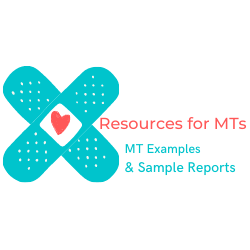DATE OF NEPHROLOGY CONSULT: MM/DD/YYYY
REFERRING PHYSICIAN: John Doe, MD
CONSULTANT: Jane Doe, MD
REASON FOR CONSULTATION: Acute rhabdomyolysis.
HISTORY OF PRESENT ILLNESS: The patient is a (XX)-year-old male who unfortunately has residual organic brain syndrome. The patient was brought in to the emergency department because of new onset of right-sided weakness and inability to talk, which has significantly improved. The patient is being treated for acute CVA. It was noted that the patient had a CPK level around 2100 on admission; it has further increased to 19,500. The patient had been taking Vytorin as an outpatient, and currently, in the hospital, he is on Zetia and Pravachol. The patient does not have any recent history of falls, trauma, and does not have any history of renal disease, hypertension and diabetes mellitus.
PAST MEDICAL HISTORY: As stated in history of present illness, also left eye blindness.
OUTPATIENT MEDICATIONS: Effexor, aspirin, Risperdal, Remeron, and has been recently started on Vytorin.
FAMILY HISTORY: Noncontributory.
SOCIAL HISTORY: He lives in assisted living facility. No tobacco or alcohol use.
REVIEW OF SYSTEMS:
NEUROLOGIC: No prior history of stroke or epilepsy. He did have organic brain syndrome as previously described.
PULMONARY: No productive cough.
CARDIOVASCULAR: No chest pain.
GASTROINTESTINAL: No nausea or vomiting.
GENITOURINARY: No pain on urination.
MUSCULOSKELETAL: Denies any joint tenderness or muscle aches, or tenderness to touch.
PSYCHIATRIC: He has had history of depression.
HEMATOLOGIC: No overt bleeding complications.
DERMATOLOGIC: No skin cancer.
ENDOCRINE: No history of diabetes or thyroid disease.
PHYSICAL EXAMINATION:
VITAL SIGNS: Blood pressure 118/74, heart rate 64 per minute, respirations 22 per minute.
GENERAL: The patient is a thin male. He is comfortable and oriented x3.
HEENT: Normocephalic. Right pupil reactive to light and accommodation. Extraocular movements are grossly intact, relatively pink conjunctiva, anicteric. Oral cavity shows no obvious lesions of the soft or hard palate.
NECK: Supple with full range of motion. No JVD. Trachea is midline.
LUNGS: Grossly clear to auscultation and percussion. No intercostal retractions.
HEART: Regular in rate and rhythm. S1 and S2. No obvious rub or gallop. There is a soft 1/6 systolic ejection murmur at the left sternal border.
ABDOMEN: PMI is at the midclavicular line. Bowel sounds are present. Soft, depressible, and nontender. No sign of any palpable masses. No evidence of hepatosplenomegaly.
EXTREMITIES: No clubbing, cyanosis or edema.
NEUROLOGIC: He has still some weakness on the right side. He is able to talk at this time. Upon presentation, he did not have any ability to talk.
SKIN: No active lesions or rash.
LABORATORY DATA: BUN 18, creatinine 0.3. On admission, CPK was around 2100. Subsequently, it has increased to 19,500.
IMPRESSION:
1. Acute rhabdomyolysis.
2. Acute cerebrovascular accident.
3. Hyperlipidemia.
4. Organic brain syndrome.
The patient is a (XX)-year-old male with no prior history of renal disease, who now is developing acute rhabdomyolysis in the absence of any overt trauma. At this point in time, it is seriously considered that the onset of the rhabdomyolysis may be associated to the therapy currently being used for treatment of his underlying dyslipidemia. The patient at this point in time will need discontinuation of the cholesterol-lowering agents and also will need to continue hydration to maintain adequate urinary flow to prevent any precipitation of myoglobin in the renal tubules, which can then result in acute renal failure. We will also obtain records from the PCP to see what the patient’s baseline liver function tests were, they are mildly elevated, and whether any CPKs were done, and to obtain the exact date of initiation of therapy with the cholesterol-lowering agents.
DIAGNOSTIC DATA: Upon presentation, his EKG showed normal sinus rhythm and he also had an echocardiogram, which showed mild mitral regurgitation and tricuspid regurgitation. CT of the brain showed no acute pathology.
PLAN: Further recommendations for the management of this patient will depend on the patient’s clinical course and the results of whether the patient has further progressive increase in CPKs. At this point in time, we would refrain from obtaining special serologic tests to assess for intrinsic muscle disease.
Thank you very much for allowing me to participate in the management of this patient.
